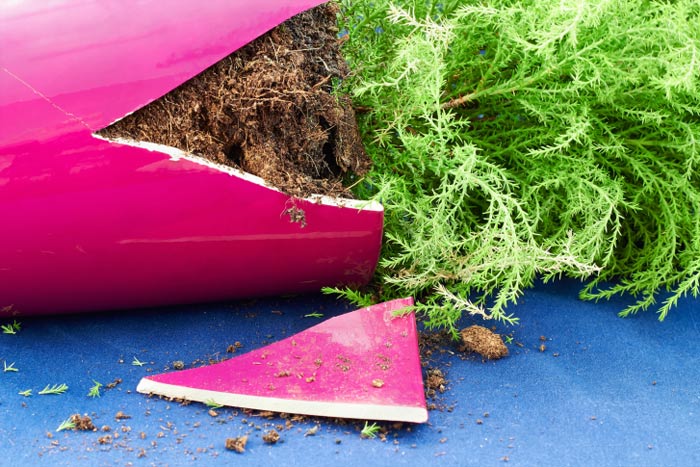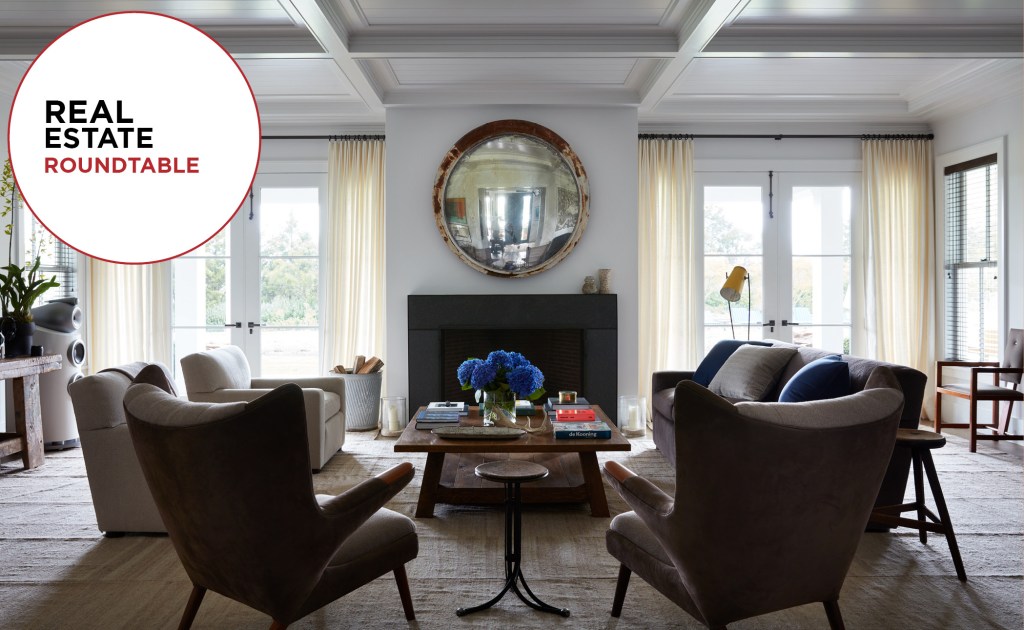View from the Garden: A Cracked Pot Can Be a Thing of Beauty

Last week we finished building three bamboo trellises in one large garden. Two are 4’ x 4’ x 6.5’ and the other ones is 8’ x 8’ x 6.5.’ They are all on the middle axis of a four-part garden. These are exact replacements of trellises that were allowed to fall down during a period when the garden was completely neglected. This garden is densely planted and because these trellises are bamboo, they melt into the garden, especially when they are covered in roses and clematis.
The roses on the original trellises were very mature; they covered the two small trellises and almost covered the large one. During this last winter and summer, I removed the roses from the broken trellises, I cut them back severely and supported them with bamboo tee-pees and kept them small (relatively) for climbing roses. I tend to anthropomorphize plants, but it seemed like they knew they had to remain small but then began to throw out large canes just before we started building. I am looking forward to recreating two walkthrough rose arches and one “room” covered with roses.
Building these structures is not for novices, and if it weren’t for my background in carpentry they would have been very challenging indeed. One must also know how to lash and where to buy the appropriate lashing cord (on the internet), as it is not available locally. But the challenge is fascinating and the results beautiful. Having become familiar with the techniques, I have built many trellises like this. We once built eight in a row at the ends of vegetable beds and planted gourd birdhouses on them. Wow! When the vines finally covered them, it was fantastic, but when the gourds were hanging in the tunnel, it was magical—and also provided a lot of gourds that we turned into houses.
I also like to put pots in the garden, along paths and at the edges of beds…really just about anywhere (I tend to be a “more is more” girl). Pots must be chosen with the specific spot in mind. Height, size, shape, style and color in relation to the mature garden are necessary considerations. “Specimen” pots can be, and often should be, unplanted. Any planted pots need the same considerations applied, and plantings should be in relation to plants in the near vicinity. Clusters of pots in the garden might also be used in the right spot.
Pots can also be used in the landscape as focal pieces. I have some large pots that I rescued that were cracked or broken. I love to reconstruct broken pots and most of my pots are rescues. Pots about to be discarded at a client’s house will probably come home with me. Several large ones sit in my beds and alone in the landscape. Pots used in these ways serve as punctuation marks and call attention to the areas in which they sit. Often, a well-placed pot just makes the bed or landscape spot complete.
More garden thrills this week: five Monarch caterpillars and four more Monarch chrysalises! Another gardener makes and keeps a vegetable garden adjacent to the flowerbeds with the caterpillars and chrysalises. As we were deadheading and weeding, there was a scurry of baby lizards in the vegetable paths. This is the first time I have seen lizards in a garden! Toads and garter snakes also live on this property. The absence of chemicals for many years has produced the environment that allows these “critters” to thrive. This is a result of many years of my work and I am pleased.
Jeanelle Myers is a professional gardener, landscaper and consultant. For gardening discussion you can call her at 631-434-5067. jeanellemyersfinegardening.com



